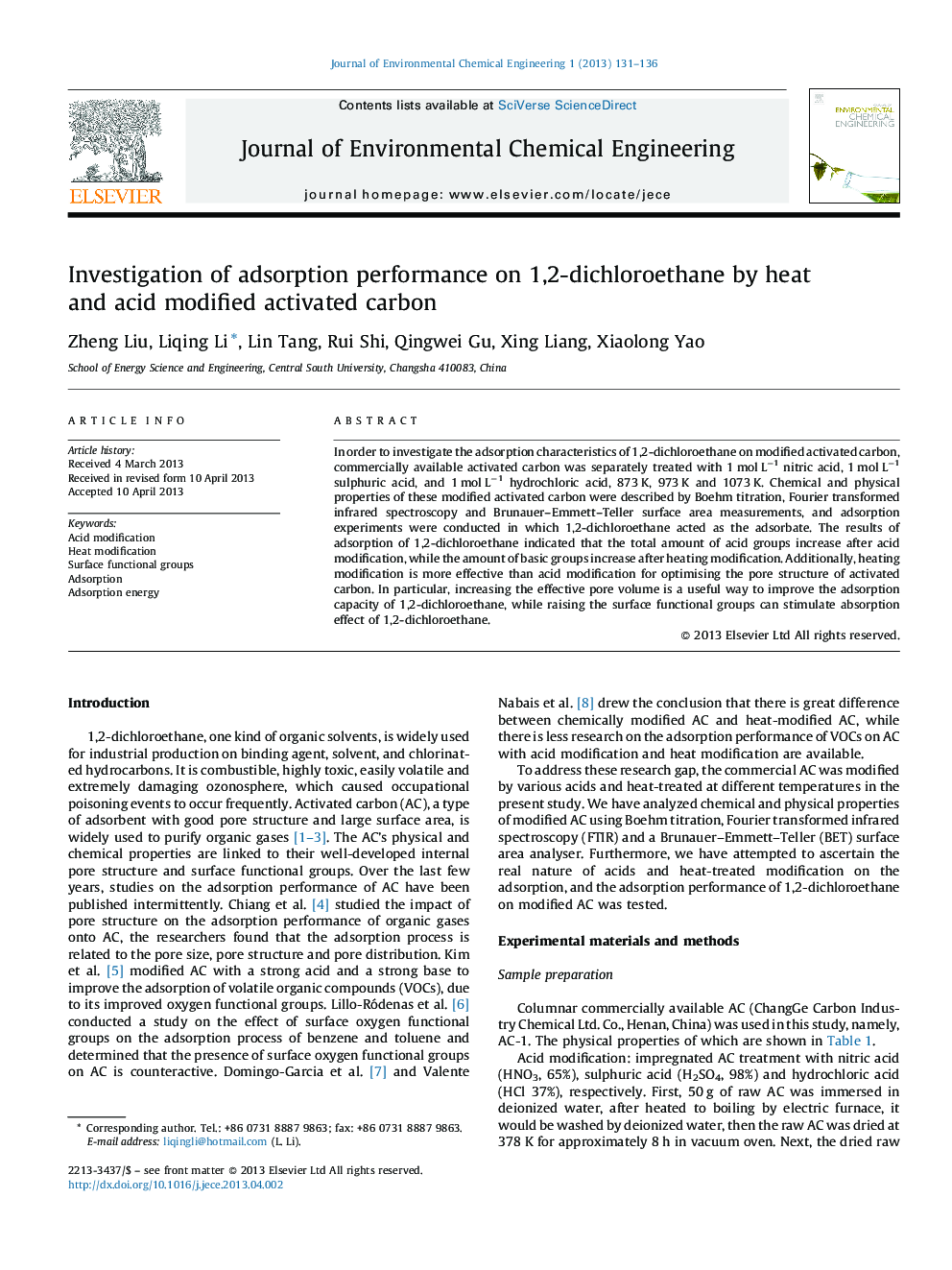| Article ID | Journal | Published Year | Pages | File Type |
|---|---|---|---|---|
| 222202 | Journal of Environmental Chemical Engineering | 2013 | 6 Pages |
In order to investigate the adsorption characteristics of 1,2-dichloroethane on modified activated carbon, commercially available activated carbon was separately treated with 1 mol L−1 nitric acid, 1 mol L−1 sulphuric acid, and 1 mol L−1 hydrochloric acid, 873 K, 973 K and 1073 K. Chemical and physical properties of these modified activated carbon were described by Boehm titration, Fourier transformed infrared spectroscopy and Brunauer–Emmett–Teller surface area measurements, and adsorption experiments were conducted in which 1,2-dichloroethane acted as the adsorbate. The results of adsorption of 1,2-dichloroethane indicated that the total amount of acid groups increase after acid modification, while the amount of basic groups increase after heating modification. Additionally, heating modification is more effective than acid modification for optimising the pore structure of activated carbon. In particular, increasing the effective pore volume is a useful way to improve the adsorption capacity of 1,2-dichloroethane, while raising the surface functional groups can stimulate absorption effect of 1,2-dichloroethane.
